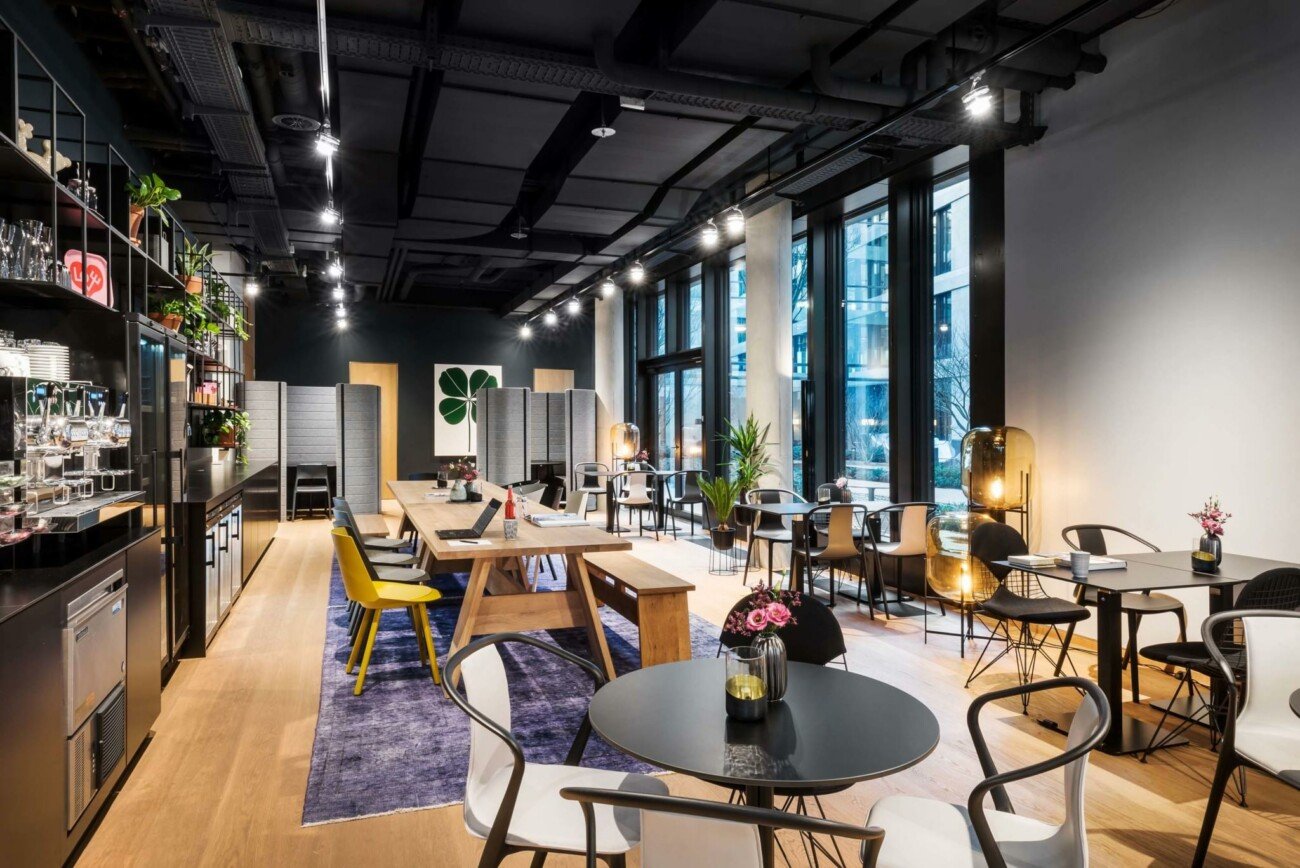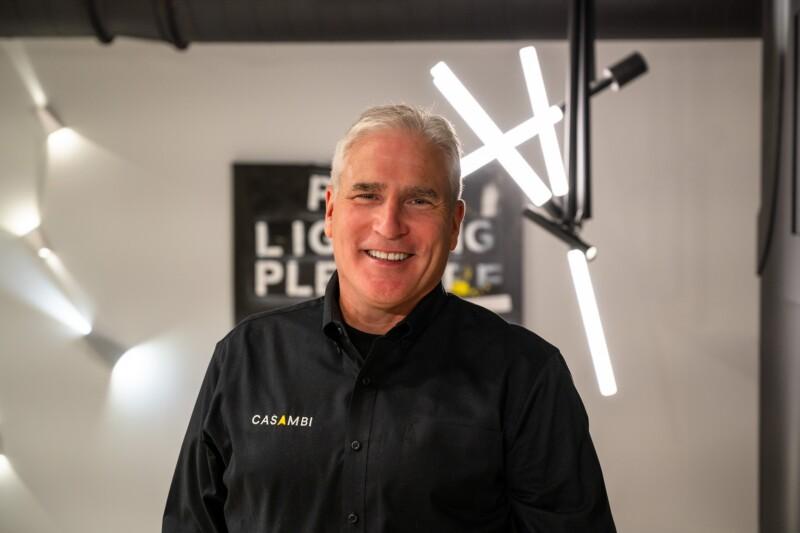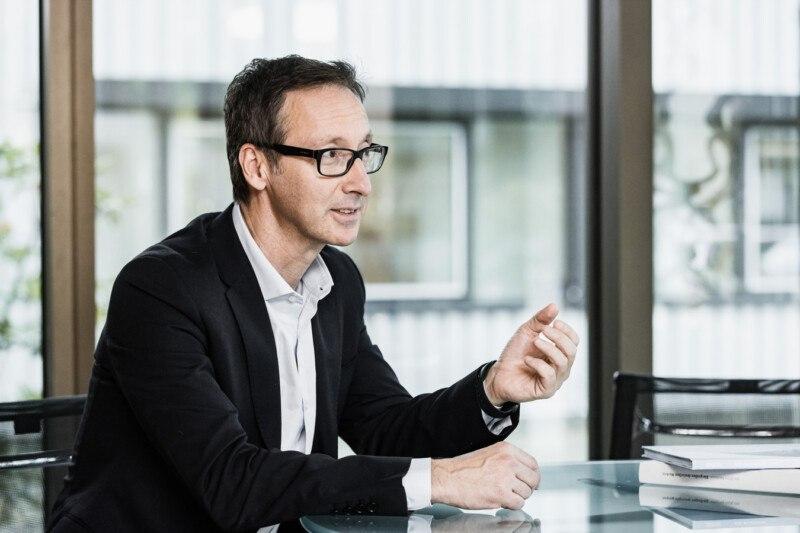Flexible Architecture thrives with Casambi’s adaptive lighting.

Leticia Mori, Lighting Control Designer at Casambi, explores the synergy between flexible architecture and Casambi’s adaptive lighting control, outlining how our tech transforms spaces into modern, intelligent environments.
The design of our built environment should emulate nature’s constant adaptation to its surroundings in the relentless pursuit of survival, incorporating adaptability, versatility, and responsiveness to evolving needs.This imperative has been significantly accentuated by the transformative impact of COVID-19, propelling Flexible Architecture into a prominent trend.
In a recent report titled “Empty spaces and hybrid places: The pandemic’s lasting impact on real estate”, McKinsey Global Institute endorses the idea that cities and buildings can adapt and thrive by adopting hybrid approaches at various levels. This includes developing mixed-use neighborhoods, constructing more flexible and ‘neutral-use’ buildings, and designing multi-use office and retail spaces.
Flexible architecture finds applications, from renovations to new builds, in all sectors, including offices, educational institutions, healthcare, hospitality, residential buildings, and retail. At the building level, envision a medical building that could be converted into a hotel. At the floor level, imagine an open floor plan with modular workspaces and furniture with movable shelves that allow workers to modify the environment and create a multi-purpose area according to their needs at any given moment: work area, collaborative space, a conference room, or a venue for engaging in compelling events and activities.
In these simple examples, we can identify some of the elements of a flexible approach. The key characteristics of flexible architecture include:
- Modularity: Spaces are designed to support the adaptability of the space, allowing for components to be easily rearranged or replaced.
- Open Floor Plans: Minimizing the use of permanent walls and partitions to create open and diaphanous spaces. This openness allows for easier reconfiguration of space based on current needs.
- Movable Furniture and Partitions: The use of movable furniture, partitions, and other elements allows for quick changes in spatial arrangements.
- Technology Integration: Flexible architecture often incorporates modern technologies that support adaptability, such as wireless connectivity, smart building systems, and responsive lighting and environmental controls.
- Sustainability: Many flexible architecture designs also consider sustainable principles. The ability to repurpose and reconfigure spaces can contribute to the longevity and sustainability of a building.
- User-Centric Design: Spaces are designed with the needs and preferences of the users in mind. This user-centric approach ensures that the environment can easily adapt to the changing requirements of the people who occupy it.
- Universal and multifunctional Spaces: The creation of multiple-use spaces that can serve various purposes. This versatility is achieved through thoughtful design and the use of adaptable furnishings and technologies.
Adaptive lighting control for shape-shifting environments
As a crucial component in any building, lighting and its control system play a vital role in adaptive design. Casambi’s wireless and scalable lighting control technology offers a versatile platform that aligns perfectly with this global trend. Let’s explore the benefits of using Casambi as a lighting control system in a built environment that functions similarly to a living organism, responding to changes in its surroundings to remain relevant and useful:
- Scalability: Casambi’s scalable solution caters to buildings of various sizes and layouts. It allows for easy and cost-effective upscaling from a single-room setup to multiple networks. This flexibility accommodates changing functions, construction modifications, and modular solutions that meet evolving user needs.
- Cost and Complexity of Installation: As a wireless solution, Casambi streamlines the installation process, minimizing costs and reducing implementation time. This is essential not only for new buildings but also for updates and renovations, as traditional retrofitting involving rewiring or installing new systems can be both expensive and time-consuming.
- Unlimited product choice: Casambi Ready devices from diverse vendors seamlessly work together, offering the freedom to choose products that suit specific requirements. For instance, selecting various form factors and finishes of Casambi-enabled battery-free switches, which are self-powered, simplifies installation and allows for quick changes in spatial arrangements.
- Human-Centric Design and Wellness: Smart lighting control enables personalized lighting experiences, taking into account factors such as circadian rhythms and individual preferences.
- User Acceptance and Familiarity: Ensuring user acceptance and ease of use is crucial. Casambi boasts a user-friendly interface that can be effortlessly handled by anyone.
- Enhanced Energy Management: Smart lighting control, complemented by advanced sensors and analytics, plays a pivotal role in achieving deeper energy savings and reducing carbon footprints in buildings.
In response to the dynamic shifts in the world and the rapidly changing needs of occupants, it is imperative to design the built environment with flexibility in mind. The concept aligns with the idea that buildings should be able to evolve alongside changing societal, technological, and environmental factors, promoting a more sustainable and user-friendly approach to design. Casambi’s innovative wireless lighting control system aligns seamlessly with this approach, offering unparalleled adaptability to transform spaces into versatile, modern, and intelligent environments. This includes the reduction of installation complexities and costs, further enhancing its appeal in creating adaptive and forward-thinking spaces.

Design Offices serves as a prime example of utilizing space in a highly flexible manner to accommodate various functions. Every area is adaptable: walls can be moved, desks can be relocated, and all interior elements are mobile. This remarkable flexibility enables the spaces to cater to individual work, host mini-fairs during lunch hours, or transform into venues for after-work parties. Casambi was selected for Design Offices due to its exceptional flexibility and future-proof capability, allowing seamless over-the-air updates for all new functionalities.
If you’d like to gain a deeper understanding of Casambi’s versatility and its compatibility with shape-shifting built environments, check out our whitepaper Casambi System Overview or get in touch:



